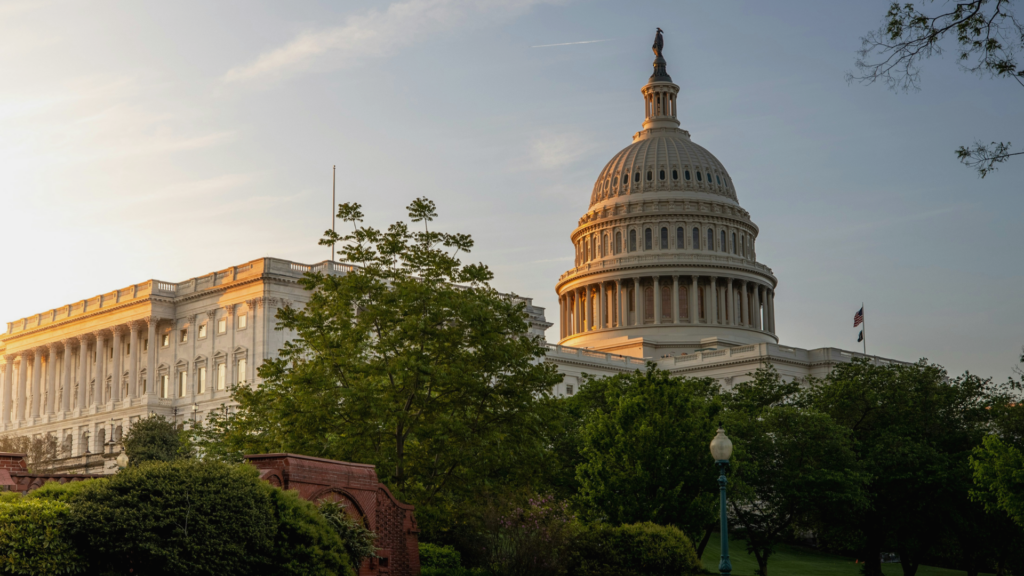NEPA Reform Under the SPEED Act Following House Approval
- Topics :
- Funding Government
U.S. Federal Government Shutdown Ends and Its Energy Sector Implications
Published November 17, 2025

The forty three day federal government shutdown has concluded with the passage of legislation funding operations through January 30 2026. This event marked the longest lapse in federal operations in United States history and created significant delays in permitting, environmental review and clean energy program administration. The end of the shutdown brings both clarity and a complex reset for stakeholders in energy, building performance and clean technology markets.
Background on the Shutdown
The prolonged shutdown slowed or halted activity at key agencies including the Department of Energy, Environmental Protection Agency and Department of the Interior. These agencies oversee permitting pathways for renewable energy and transmission projects, manage efficiency and retrofit grant programs and conduct environmental review. With thousands of federal staff furloughed or operating under restricted capacity, the normal cadence of regulatory oversight and program administration was interrupted. The shutdown’s duration created an expanding backlog of grant evaluations, site reviews and rulemaking tasks that would normally advance month by month.

Federal Energy and Environmental Work That Was Paused
During the shutdown, multiple processes central to the clean energy and building sectors stalled. Renewable project developers faced delays in federal permitting for wind, solar and transmission lines. Building performance and efficiency initiatives paused reviews for rebate applications and program approvals. Grid resilience projects managed through federal coordination offices experienced reduced staffing. Many programs that support machinery upgrades, electrification technology incentives and environmental compliance were forced into temporary suspension. Stakeholders who depend on predictable timelines had to reassess planned milestones and adjust financial or operational strategies.
Stakeholder Impacts Across Energy and Building Sectors
The shutdown created uncertainty for actors across energy and building related value chains. Building owners and facility managers who rely on federal rebates or grants to underpin retrofit economics faced unexpected pauses. Retrofit firms experienced stalled project schedules because application processing and verification work was disrupted. Utilities and grid planners encountered delays in federal coordination for resilience programs. Clean energy project developers who depend on timely federal environmental assessments or permit decisions were forced to adjust financing timelines and risk projections. These delays influenced project sequencing and could create short term pressure on contractor capacity as activities resume.

What to Expect as Agencies Resume Operations
With the government now funded, agencies will initiate a process to clear accumulated backlogs. Historically, federal offices prioritize completion of paused applications and reviews in the initial weeks following a shutdown. This may generate a burst of activity as review cycles accelerate. Funding solicitations that were expected during the shutdown period are likely to reappear in compressed windows. Program administrators may adjust schedules to align with statutory deadlines, which can reshape the timing of opportunities for building performance upgrades, efficiency rebates and clean energy development. Stakeholders can prepare by evaluating pending applications, refreshing documentation requirements and planning for new funding announcements. Project teams who anticipate the restart of environmental and permitting reviews should position materials so they are ready for rapid follow up when agency staff begin assessments.
Conclusion
The end of the shutdown marks the beginning of a catch up phase across the federal energy and environmental landscape. The accumulated delays will shape project timelines and administrative cycles into 2026. For building owners, clean energy developers and retrofit service providers, attention to agency announcements and permitting calendars will be important in managing risk during the recovery period. As backlogs clear and funding rounds reopen, stakeholders have an opportunity to re engage with programs that support efficiency investments, resilience measures and clean energy deployment.
Reference









